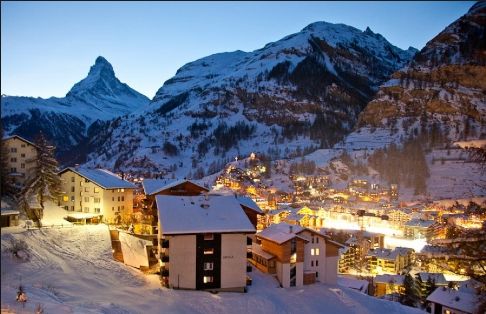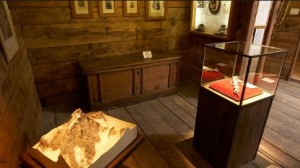9. Walking around the village of Zermatt is something you really can’t miss while at Zermatt. The village of Zermatt has been shaped by ancient traditions and modern tourism. The thrilling contrasts can be explored on a walk through the village. In the old village, about 30 ancient buildings show the traditional building style of the original Walser residents. The barns and grain stores, up to 500 years old, are a piece of living history and reveal how the mountain farmers of Zermatt once lived. Zermatt is also home to more than 100 hotels and numerous chalets, some ancient, others very modern. Walking around looking at beautiful hotels and chalets are very popular to not only look at but also to take photographs. The Bahnhofstrasse in Zermatt’s main street is a delight to walk along at any time with its bars, restaurants, boutiques, souvenir shops, bakeries and shops selling cakes and chocolates. Since Zermatt is a car-free area, visitors have a wonderful time walking around the town without being scared of cars. It is an absolute pleasure to walk along the streets where there are horse-drawn carriages and during summer, herd of about 50 Valais Blackneck goats descends on the Bahnhofstrasse everyday with their twisted horns and long-haired, black and white coats. These goats are very popular and very photogenic.
10. Matterhorn museum or Zermatt museum has become an important pillar of Zermatt’s alpine history and culture with as man yas 1000 visitors flocking to the underground world of the museum on some days. On average, around 40,000 persons visit the museum each year. It can happen that up to 1,000 persons descend the stairs into the underground past of Zermatt on a single day. The museum’s village square behaves like a real village with walk-in buildings from the cobbled village square with the mountain guides house, the local pastor’s home, the tiny tea house and the stables with farm animals, including mules, black-necked goats and black-nose sheep. The visitors are mostly drawn to mountain guides house and to the house in which the first ascent of Matterhorn by Edward Whymper in the year 1865 is shown. The drama of the three survivors and the four men who fell is shown. In addition to the broken rope, which is draped over a red velvet cushion, you can also see equipment and clothing remnants from the victims, as well as the portraits of the stern-looking participants. In 2007, using a replica of the original rope, it was found that, contrary to the rumors, the rope was not cut for self-survival. The investigation commissioned by the museum proved that the rope could only hold 300 kilograms, and was therefore too thin to save the lives of the four men that fell. The following are also shown, the ascent routes on the Hore. The records from the year 2011 showing the latest conquerors of the Matterhorn. The stories of the ascents of the North Wall of the Matterhorn and the female mountaineer Yvette Vaucher, and of course the legendary Zermatt guide Ulrich Inderbinden can be seen more than once.


